Cuando salgas de excursión invernal en zonas remotas, empacar inteligentemente es imprescindible. Necesitas equipo que te mantenga seguro, abrigado y ágil sin que te pese. Aquí tienes la versión corta de qué llevar:
- Snowfeet*: equipo ligero como Mini Ski Skates o Skiblades que cabe en tu mochila y funciona con botas de invierno normales.
- Ropa: usa un sistema de capas - capas base que absorban la humedad (como lana merino), aislamiento cálido (plumas o sintético) y una capa exterior impermeable.
- Hidratación y Comida: botellas o bolsas de agua aisladas para evitar que se congelen, además de snacks densos en calorías como nueces y frutas secas.
- Equipo de Emergencia: botiquín de primeros auxilios, herramientas para encender fuego, refugio de emergencia y un comunicador satelital si vas a zonas remotas.
- Navegación y Iluminación: dispositivo GPS, mapa, brújula y una linterna frontal LED confiable con baterías extra.
- Multiherramientas y reparaciones: Multiherramienta compacta, cinta adhesiva y correas de repuesto Snowfeet* para reparaciones rápidas.
La clave es mantenerse ligero, empacar solo lo que usarás y mantener los artículos críticos accesibles. Con el equipo Snowfeet* y los esenciales adecuados, estarás listo para enfrentar el terreno invernal con facilidad.
Episodio 4: Qué empacar para un día en la naturaleza | Salomon Cómo Hacer
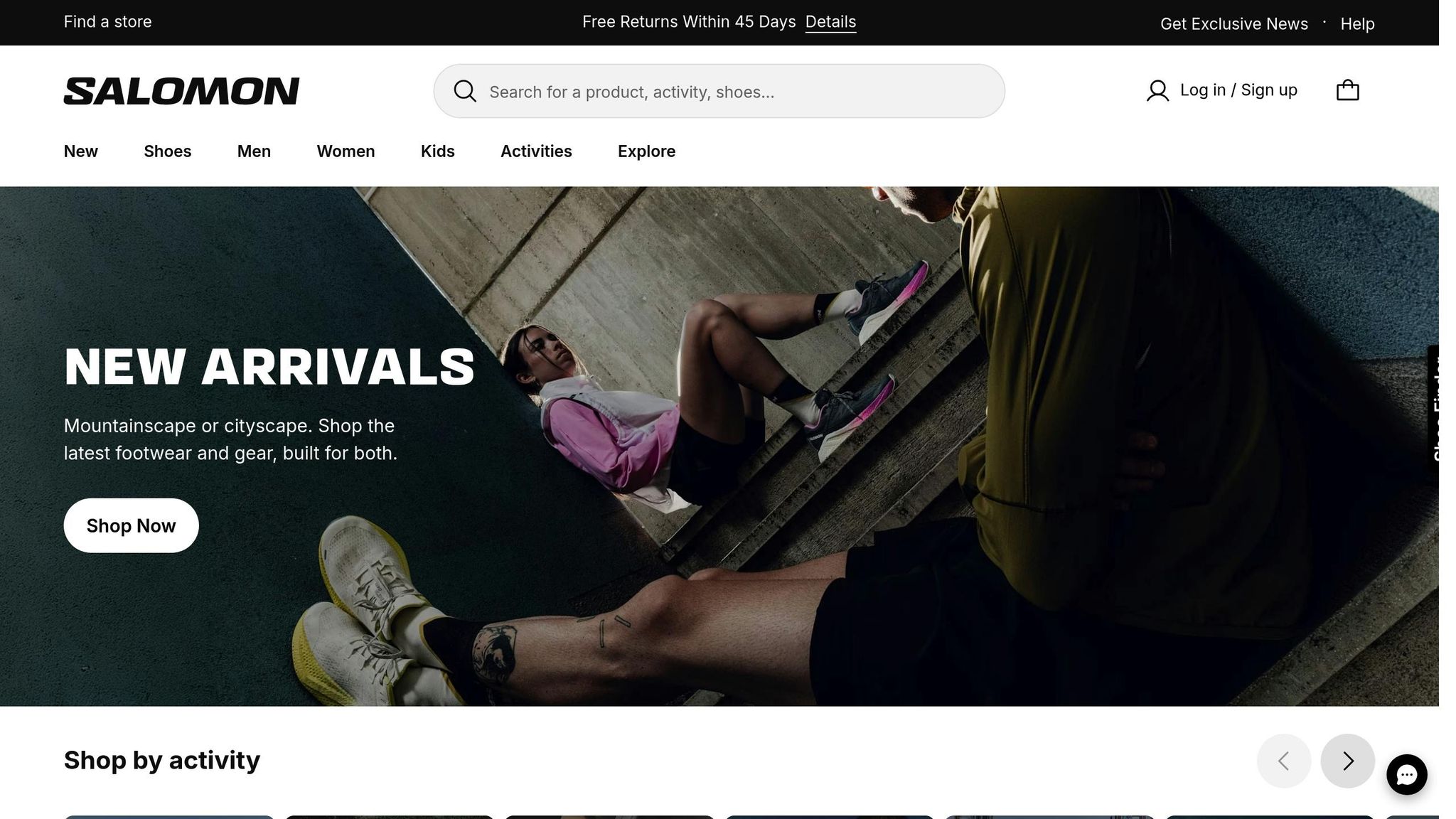
Por qué los productos Snowfeet* son los mejores para aventuras fuera de pista
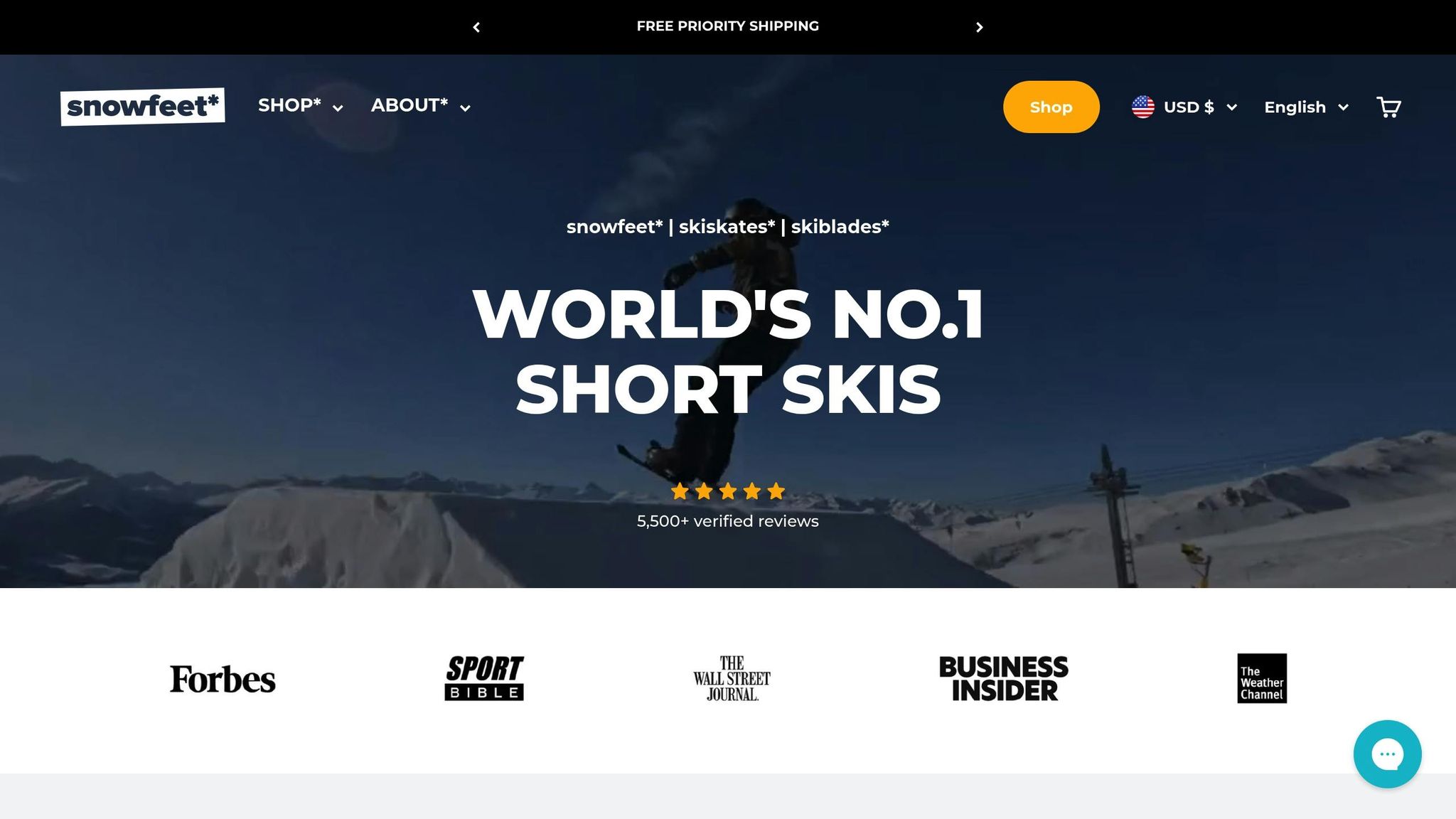
Cuando te preparas para una excursión de un día fuera de pista, los productos Snowfeet* ofrecen una alternativa práctica a los esquís y snowboards tradicionales. Su enfoque en la portabilidad y simplicidad los convierte en una opción destacada para aventureros.
Ligero y fácil de empacar
A diferencia de los esquís o snowboards tradicionales, el equipo Snowfeet* es compacto y fácil de transportar. Sus modelos van desde solo 38 cm (Mini Ski Skates) hasta 65 cm (Skiblades), lo que facilita su colocación en tu mochila de día. Olvídate de cargar con portaequipajes voluminosos: estos pueden deslizarse directamente en tu mochila junto con tus otros esenciales. Ya sea que estés caminando por senderos o subiendo pendientes, este diseño ligero mantiene tu carga manejable.
Versátil en diferentes terrenos
Las aventuras fuera de pista a menudo implican enfrentarse a todo tipo de condiciones de nieve, y ahí es donde los productos Snowfeet* brillan. Mientras que los esquís largos son ideales para nieve profunda, pueden fallar en terrenos mixtos. El equipo Snowfeet*, como el WALKSKI, está diseñado para manejar una variedad de condiciones. Con un diseño duradero y adherente, funciona bien en subidas, secciones planas y descensos.
Claro, la nieve profunda y no consolidada puede ser un desafío para estos modelos más cortos, pero prosperan en condiciones compactas o moderadas, exactamente lo que encontrarás en la mayoría de las excursiones fuera de pista. ¿La verdadera ventaja? Su flexibilidad. Los productos Snowfeet* te permiten moverte sin problemas desde senderos preparados hasta terrenos moderados fuera de pista, convirtiéndolos en una opción versátil para aventureros que no quieren estar atados a condiciones específicas de nieve.
Fácil de aprender y usar
Los esquís y snowboards tradicionales a menudo tienen una curva de aprendizaje pronunciada y requieren botas especializadas que añaden volumen innecesario. Los productos Snowfeet*, en cambio, funcionan con tus botas de invierno normales. Esto significa que puedes salir a las pistas sin invertir en equipo extra. Su longitud más corta los hace más fáciles de maniobrar, ya sea que estés navegando por espacios estrechos, haciendo giros rápidos o enfrentando terrenos mixtos.
Esta facilidad de uso también se traduce en transiciones más rápidas. En lugar de lidiar con equipos complicados, puedes pasar más tiempo explorando y menos tiempo ajustando tu equipo. Los productos Snowfeet* simplifican tu experiencia en la naturaleza, dejándote libre para concentrarte en la aventura que tienes por delante. Se trata de hacer que tu día en la naturaleza sea más agradable y sin complicaciones.
Ropa y aislamiento para viajes invernales en la naturaleza
Al usar el equipo Snowfeet*, se trata de mantener las cosas simples y eficientes. Combínalo con capas ligeras que proporcionen calor sin añadir volumen innecesario. Así, te mantienes cálido y ágil mientras llevas solo lo esencial.
Conceptos básicos de capas para clima frío
Comienza con una capa base sólida. La lana merino es una elección destacada: ayuda a regular la temperatura corporal, absorbe la humedad e incluso resiste olores. A diferencia de los materiales sintéticos, la lana merino puede manejar la humedad sin sentirse pegajosa, y sus fibras suaves la hacen súper cómoda para días largos en la naturaleza.
"Las capas base son esenciales en un sistema de ropa para exteriores. Cuando necesitas regular tu temperatura y manejar la humedad en el calor intenso o las tormentas de nieve, las capas base son la primera línea de defensa." - Casey Handley, CleverHiker
Para condiciones frías, considera el Smartwool Classic Thermal (115 $) para un calor y control de humedad de primera. Si buscas una opción más asequible, el REI Midweight Half Zip (60 $) ofrece gran calor y durabilidad.
Si tus aventuras en la naturaleza implican actividad de alta intensidad, las capas base sintéticas pueden hacer maravillas. El Patagonia Capilene Midweight Crew (79 $) es una opción confiable y económica, mientras que la Outdoor Research Echo Hoodie (75 $) es una opción ultraligera con extras útiles como capucha y orificios para los pulgares.
Cuando se trata de aislamiento, el plumón es el MVP. Ofrece una eficiencia de calor-peso inigualable, aproximadamente tres veces mejor que el aislamiento sintético. Busca plumón con poder de relleno de 800–900 para el mejor rendimiento y facilidad de empaque. Sin embargo, si enfrentas condiciones húmedas, el aislamiento sintético es la mejor opción ya que se seca más rápido, aunque es más pesado y menos compresible.
Para un punto intermedio, el plumón resistente al agua combina calor ligero con algo de protección contra la humedad. Mientras tanto, opciones sintéticas más nuevas como Thermoball, Nano-Air y Polartec Alpha están diseñadas para respirar mejor durante el uso activo, haciéndolas ideales para combinar con tu equipo Snowfeet*.
Tu capa exterior debe ser ligera y fácil de empacar. Las chaquetas con aislamiento híbrido - que mezclan plumón y rellenos sintéticos - ofrecen calor dirigido y funcionan bien en áreas húmedas. Muchas chaquetas modernas incluso cuentan con aislamiento mapeado al cuerpo, que ajusta el grosor según las zonas del cuerpo para maximizar la eficiencia.
Accesorios para mantenerse abrigado
Una vez que tengas tus capas base y de aislamiento listas, no olvides proteger tus extremidades. ¿Guantes o manoplas? Todo es cuestión de compensar. Las manoplas mantienen los dedos más calientes al acumular calor, mientras que los guantes ofrecen mejor destreza para tareas como ajustar el equipo.
Para aventuras en la naturaleza, busca guantes que equilibren calor y flexibilidad. Si tus manos se enfrían fácilmente o vas a condiciones extremas, los guantes calefactables pueden ser un cambio total.
Cuando se trata de gorros, opta por materiales que absorban la humedad y se mantengan en su lugar durante el movimiento activo. El Sunday Afternoons Outback Merino Beanie (42 $) es una opción sólida para calor y manejo de humedad. ¿Presupuesto ajustado? El Meriwool Layers Merino 250 Cuffed Beanie (25 $) cumple con su función. Para una opción súper económica, el Tough Headwear Beanie (unos 6,95 $) tiene una calificación promedio de 4.4 de 5 en más de 8,650 reseñas en Amazon, aunque las opiniones sobre la calidad varían. Para mujeres con cabello largo, el TrailHeads Trailblazer Ponytail Hat (38 $) ofrece cobertura completa mientras acomoda coletas.
Dado que el equipo Snowfeet* funciona con tus botas de invierno habituales, elige calcetines de lana merino para calor, comodidad y resistencia al olor: sin puntos de presión, sin problema.
Por último, asegúrate de que tus capas base ajusten bien para mejorar la absorción de humedad y la comodidad general. Elige telas ligeras para condiciones suaves y opciones de peso medio a pesado para climas más fríos. Un sistema de capas inteligente mantiene tu mochila ligera mientras te asegura comodidad y preparación para tu aventura en la naturaleza.
Hidratación, comida y artículos de emergencia
Mantenerse alimentado e hidratado es tan importante como tener el equipo adecuado cuando estás en la naturaleza. Así como el equipo Snowfeet* te mantiene ligero y ágil, la hidratación, nutrición y herramientas de emergencia adecuadas aseguran que estés listo para enfrentar el terreno invernal sin perder ritmo.
Soluciones de hidratación
Hidratarse en invierno tiene sus propios desafíos. El aire frío y la menor necesidad de beber a menudo toman a la gente por sorpresa. Por eso, los sistemas de hidratación aislados son un cambio total: evitan que tu agua se congele y facilitan hidratarte mientras te mueves.
Sistemas de hidratación aislados son una opción inteligente, especialmente cuando se combinan con el equipo Snowfeet*. Por ejemplo, el HydraPak ArcticFusion™ Tube (21 $) está diseñado para mantener el agua fluyendo incluso en condiciones de congelación. Combínalo con el HydraSleeve™ Reservoir 3L (70 $) para un aislamiento completo de tu suministro de agua.
Si buscas una configuración más simple, las botellas de boca ancha son una opción económica. Mantenlas cerca de tu cuerpo para usar tu calor corporal y evitar que se congelen. Aquí tienes un consejo útil: lleva las botellas boca abajo. Como el hielo se forma en la parte superior, esto mantiene la abertura despejada.
¿Quieres una ventaja extra? Llena tu vejiga de hidratación con agua caliente (hasta 140°F) antes de salir. Esto mantiene tu agua tibia durante las primeras horas y retrasa la congelación. Y no olvides limpiar el tubo después de cada sorbo para evitar que se congele.
Para portabilidad compacta, echa un vistazo a la serie HydraPak Stow™. La botella de 500 ml (18 $) se comprime cuando está vacía, y la versión de 1 L (22 $) te da más capacidad sin añadir mucho peso. Son geniales como respaldo o para viajes cortos.
Snacks Compactos y Altos en Calorías
Cuando te mueves rápido con el equipo Snowfeet*, tus snacks deben seguir el ritmo. ¿La clave? Opta por alimentos que tengan al menos 100 calorías por onza, aunque 125 o más es aún mejor. Esto asegura que obtengas la energía que necesitas sin sobrecargar tu mochila.
Grandes opciones incluyen nueces, semillas, mantequillas de nueces, palitos de carne y frutas secas. Las nueces y semillas son especialmente densas en calorías: solo una taza de cacahuates tiene 800 calorías, y las almendras aportan 500 calorías. Además, te mantienen lleno por más tiempo que los snacks azucarados.
Las frutas secas son otra excelente opción. Están llenas de nutrientes, ofreciendo hasta tres veces más fibra, vitaminas y minerales por peso en comparación con la fruta fresca.
Para excursiones de un día, apunta a snacks de menos de 300 calorías que equilibren proteínas, grasas y carbohidratos para una energía constante. Si planeas una aventura más larga, los mochileros ultraligeros suelen llevar de 1½ a 2 libras de comida por día, lo que se traduce en 2,500-4,500 calorías. El combustible adecuado te mantiene fuerte, sin importar el terreno.
Herramientas de Emergencia y Primeros Auxilios
Incluso en una salida rápida, estar preparado para lo inesperado es innegociable. El equipo Snowfeet* te permite explorar terrenos desafiantes, pero eso también significa que debes estar listo para situaciones donde la ayuda podría no estar cerca.
Tu kit de emergencia debe incluir un botiquín de primeros auxilios compacto, herramientas impermeables para encender fuego, un refugio de emergencia ultraligero (como un saco bivy o una manta) y un localizador personal o comunicador satelital si te aventuras en áreas remotas.
Asegúrate de que estos elementos esenciales sean fáciles de agarrar. Guárdalos en los bolsillos exteriores o en la parte superior de tu mochila para que puedas acceder a ellos rápidamente. Y asegúrate de que todos en tu grupo sepan dónde están estos artículos; podría marcar la diferencia en una emergencia.
Navegación, iluminación y herramientas multiusos
Cuando estás en la naturaleza, mantener el rumbo y estar preparado para situaciones inesperadas es innegociable, especialmente cuando te deslizas con el equipo ligero Snowfeet*. Para mantener todo seguro y fluido, asegúrate de llevar herramientas de navegación sólidas, iluminación confiable y algunos esenciales para reparaciones rápidas.
Herramientas de navegación
Tu smartphone puede ser genial para las calles de la ciudad, pero en la naturaleza? No tanto. Los dispositivos GPS portátiles son más resistentes, duran más y son más precisos que tu teléfono. Por ejemplo, mientras la precisión del GPS de un smartphone ronda los 4.9 metros, los dispositivos con WAAS (Sistema de Aumento de Área Amplia) pueden acercarte a 3 metros.
Si buscas un GPS de primera categoría, el Garmin GPSMAP 67i (600 $) destaca. Es resistente, pesa 8.1 oz y ofrece 180 horas de duración de batería. Además, incluye mensajería satelital y funciones SOS vía inReach.
"El GPSMAP 67i es el dispositivo GPS portátil de primera línea de Garmin, que integra sus mejores herramientas de navegación en un diseño resistente, junto con el beneficio adicional de mensajería satelital y SOS vía inReach."
Para una opción económica, echa un vistazo al Garmin eTrex SE (150 $). Es ligero, con 5.5 oz, ofrece 168 horas de duración de batería y maneja navegación básica sin necesidad de conexión telefónica. Una gran combinación para tus aventuras con Snowfeet*.
¿Quieres algo aún más ligero? El Garmin inReach Mini 2 (400 $) pesa solo 3.5 oz y aún ofrece mensajería satelital. Perfecto si necesitas tranquilidad sin volumen extra.
"Si quieres tranquilidad en la naturaleza sin el peso y volumen adicionales de un GPS con muchas funciones, esta es la unidad ideal."
Sea cual sea el GPS que elijas, no olvides combinarlo con un mapa y una brújula confiables. Un poco de respaldo nunca está de más.
| Dispositivo GPS | Precio | Peso | Pantalla | Duración de la batería | Mensajería & SOS |
|---|---|---|---|---|---|
| Garmin GPSMAP 67i | $600 | 8.1 oz | 3.0 pulg | 180 horas | Sí |
| Garmin eTrex SE | $150 | 5.5 oz | 2.2 in | 168 horas | No |
| Garmin inReach Mini 2 | $400 | 3.5 oz | 1.3 in | 14 días | Sí |
| Garmin Montana 700 | $600 | 14.5 oz | 5.0 in | 18 horas | No |
| Garmin Foretrex 801 | $250 | 3.8 oz | 2.2 in | 100 horas | No |
Ahora que la navegación está cubierta, hablemos de iluminación.
Equipo de iluminación
Una buena iluminación no solo es útil en la naturaleza, es imprescindible. Las linternas frontales LED son tu mejor opción para aventuras invernales, ya que soportan temperaturas bajo cero como campeonas.
Un favorito entre exploradores experimentados es el Black Diamond Spot 400 (54,95 $). Probado durante 57 noches en lugares como California y Washington, brilló intensamente desde el anochecer hasta el amanecer y ganó un Premio Editors' Choice. ¿Su tiempo de funcionamiento más largo? Un increíbleas 200 horas en la configuración más baja.
"Tiempo de uso, brillo y comodidad se combinan a un gran precio en la Black Diamond Spot 400, convirtiéndola en la mejor lámpara para senderismo, escalada y limpiar tu cobertizo."
Si necesitas un brillo serio, el Petzl Actik Core (62,93 $) ofrece 600 lúmenes y viene con una batería recargable. Probado en campo en Colorado y Wyoming durante 27 noches, es una opción confiable y ecológica.
"El Petzl Actik Core de 600 lúmenes ofrece una luz cegadora y, al ser recargable, podría ahorrarte dinero en baterías, además de la frustración de una lámpara muerta."
Para quienes tienen un presupuesto más ajustado, el Black Diamond Astro 300-R (44,95 $) es una opción sólida. Usuarios en Minnesota y Nueva York apreciaron su brillo y duración de batería de 140 horas durante 22 noches de prueba.
Consejo profesional: Usa baterías de litio; funcionan mucho mejor en clima frío que las alcalinas. Algunas linternas frontales incluso tienen paquetes de baterías que puedes mantener calientes dentro de tu chaqueta. También vale la pena considerar funciones adicionales como modos de luz roja (para proteger tu visión nocturna) y resistencia al agua.
Multiherramientas y kits de reparación
Incluso con la configuración sencilla de Snowfeet*, una multiherramienta compacta y un kit de reparación son salvavidas. Busca una multiherramienta con alicates, cuchillo, destornilladores y tijeras; es perfecta para ajustar las fijaciones o hacer reparaciones rápidas. Solo asegúrate de que tenga un mecanismo de bloqueo para evitar accidentes.
Para ajustes específicos de Snowfeet*, añade algunas correas de repuesto y un poco de cera para esquís. Estos pequeños extras ocupan casi nada de espacio pero pueden salvar el día si algo falla.
¿Otros esenciales? Cinta adhesiva, bridas, un tubo de adhesivo multiusos, baterías de repuesto y un kit de costura compacto. Estas pequeñas herramientas pueden solucionar problemas con el equipo y mantener tu viaje en marcha. Después de todo, un poco de preparación hace mucho cuando estás ahí afuera.
sbb-itb-17ade95
Comparación: Snowfeet* vs Esquís tradicionales y tablas de snowboard
Cuando te preparas para una excursión de un día en la montaña, cada onza cuenta. Las tablas de snowboard tradicionales, incluidas las fijaciones, pueden pesar entre 9 y 15 libras. Snowfeet*, por otro lado, están diseñados para ser increíblemente ligeros, haciendo tu viaje más fácil y eficiente. Esta ventaja de peso los diferencia del equipo tradicional.
¿Otra gran diferencia? Los esquís y tablas de snowboard tradicionales pueden ser torpes y voluminosos, especialmente en terrenos mixtos. Snowfeet* resuelven esto ofreciendo una opción compacta y versátil que te permite moverte sin problemas entre el senderismo y el deslizamiento, sin necesidad de cambiar de equipo.
Tabla comparativa de características
Aquí tienes un resumen rápido de cómo Snowfeet* se comparan con los esquís tradicionales y las tablas de snowboard:
| Característica | Snowfeet* | Esquís tradicionales | Snowboards tradicionales |
|---|---|---|---|
| Peso | Mucho más ligero | Más pesado | 9–15 lbs (con fijaciones) |
| Portabilidad | Cabe fácilmente en una mochila | Necesita correas externas | Necesita correas externas |
| Versatilidad de terreno | Maneja senderos de caminata y pistas | Mejor para pistas | Mejor para pistas |
| Compatibilidad de botas | Funciona con zapatos de invierno, botas de esquí o botas de snowboard | Generalmente requiere botas de esquí | Generalmente requiere botas de snowboard |
| Mantenimiento | Bajo mantenimiento | Afinado y encerado regular | Afinado y encerado regular |
Una de las características destacadas de Snowfeet* es su compatibilidad con casi cualquier bota de invierno - no se necesitan botas especializadas de esquí o snowboard. Esto los hace ideales para terrenos mixtos, donde la flexibilidad es clave.
Y no olvidemos el mantenimiento. A diferencia de los esquís y snowboards tradicionales, que necesitan encerado constante, afilado de cantos y ajuste, Snowfeet* requieren solo un mantenimiento mínimo. Eso significa menos tiempo ajustando tu equipo y más tiempo disfrutando de las pistas.
Al comparar, queda claro que Snowfeet* ofrece una alternativa ligera, portátil y de bajo mantenimiento al equipo tradicional. Perfecto para quienes valoran la eficiencia y versatilidad en el campo.
Lista de Empaque: Artículos para una Mochila de Día en el Campo
Lista Completa de Equipo y Suministros
¿Vas a salir de excursión invernal al campo? Aquí tienes una lista práctica para asegurarte de que llevas lo esencial. Con un enfoque en equipo ligero y portátil, esta lista te ayudará a estar preparado y seguro.
Esenciales del Equipo Snowfeet*
El equipo Snowfeet* se trata de portabilidad. Empaca los Snowfeet* Mini Ski Skates ($150) o mejora a los Snowfeet* PRO ($199). Ambos son lo suficientemente compactos para caber en cualquier mochila. No olvides las correas de repuesto y la cera Snowfeet* (desde $6). Estos artículos ligeros facilitan cambiar entre caminar y deslizarse sin que te pesen.
Herramientas de Navegación y Seguridad
- Dispositivo GPS: Considera el Garmin eTrex SE ($150) por su simplicidad o el GPSMAP 67i ($600) para funciones avanzadas.
- Mapa y brújula: Siempre tenlos como respaldo en caso de que tu GPS falle.
Hidratación y Nutrición
- Bolsa de hidratación: Opciones como la Gregory 3D Hydro ($40–$50) mantienen el agua accesible mientras te mueves.
- Comida y agua extra: Empaca suficiente para un día adicional, por si acaso.
- Snacks altos en calorías: Piensa en barras energéticas, mezcla de frutos secos o cualquier cosa compacta y nutritiva.
Suministros de emergencia y primeros auxilios
- Botiquín de primeros auxilios: Prueba el Adventure Medical Kits Ultralight/Watertight .7 ($35) o el Surviveware Small Kit. Este último incluye esenciales como tijeras para trauma, vendas Ace, guantes y una máscara de RCP.
- Refugio de emergencia: Una opción ligera puede salvar vidas.
- Encendedor de fuego: Cerillas, encendedores o un pedernal son imprescindibles.
- Kit de reparación: Incluye cinta adhesiva y una multiherramienta para arreglos rápidos.
Iluminación y Herramientas
- Linterna frontal: Asegúrate de que sea confiable y lleva baterías extra.
- Fuente de luz de respaldo: Una linterna pequeña u otro frontal es una buena idea.
- Multiherramienta: Útil para reparaciones o ajustes mientras estás en el terreno.
Ropa y Protección
- Capas: Comienza con capas base que absorban la humedad, añade capas intermedias aislantes y termina con una capa exterior impermeable.
- Protección solar: La nieve refleja la luz solar, así que lleva gafas de sol, protector solar y un sombrero para protegerte de los rayos UV.
Esta lista mantiene las cosas simples pero completas, para que puedas concentrarte en disfrutar tu aventura mientras te mantienes seguro y bien preparado.
Conclusión: Empaca Inteligentemente para Aventuras de Invierno
Empacar eficientemente puede hacer la diferencia en tu aventura invernal fuera de pista. Con el equipo Snowfeet*, tienes una alternativa compacta al equipo tradicional voluminoso. Te permite cambiar suavemente entre caminar y deslizarte sin la molestia de intercambiar equipo constantemente.
Para aprovechar al máximo tu viaje, presta atención a cómo organizas tu mochila. Mantén los objetos más pesados, como tu equipo Snowfeet*, cerca de las caderas para evitar tensiones innecesarias en la espalda. Guarda esenciales como agua, snacks y herramientas de navegación en lugares de fácil acceso, como los bolsillos de la cadera o el pecho. Esta configuración te evita tener que hurgar en la mochila, algo especialmente importante en condiciones de frío cuando el tiempo y la comodidad son cruciales.
Asegúrate de que los objetos exteriores estén bien sujetos y procura mantener tu mochila lo más ligera posible. Una mochila equilibrada y bien organizada significa mejor estabilidad y más energía para las cosas divertidas.
Cada pequeño detalle, como los de la lista de equipo y embalaje, suma para un viaje más seguro y agradable. El campo está lleno de momentos increíbles en invierno, y estar preparado asegura que puedas disfrutarlos al máximo. Con el equipo ligero Snowfeet*, un embalaje inteligente y los elementos esenciales de seguridad adecuados, tus aventuras invernales serán más cómodas y sin estrés. Elige equipo que trabaje contigo, no en tu contra, y verás cómo una configuración elegante y ligera transforma tu experiencia.
Preguntas frecuentes
¿Cómo se comparan los Snowfeet* con los esquís y snowboards tradicionales para aventuras fuera de pista?
Snowfeet* llevan la diversión a otro nivel en las aventuras fuera de pista con su diseño ligero y compacto y su impresionante maniobrabilidad. A diferencia de los esquís o snowboards tradicionales, que pueden sentirse torpes y están diseñados para velocidad o estabilidad en pistas preparadas, Snowfeet* sobresalen en terrenos estrechos, irregulares o impredecibles. Su tamaño pequeño facilita realizar giros rápidos y precisos, ya sea navegando por baches, deslizándote por la nieve polvo o zigzagueando por senderos estrechos.
Además, Snowfeet* son geniales para principiantes. Son más fáciles de controlar y menos intimidantes que el equipo tradicional, lo que puede ayudar a minimizar las caídas fuertes. Mientras que los esquís son excelentes para absorber baches y alcanzar altas velocidades, Snowfeet* ofrecen una experiencia divertida y reactiva. Si valoras la portabilidad y libertad por encima del equipo voluminoso, estos son una opción fantástica para esquiadores y aventureros que buscan mantener las cosas ligeras y flexibles en sus escapadas fuera de pista.
¿Qué debo empacar en una mochila pequeña para un día de backcountry en invierno (excluyendo equipo para avalanchas)?
Empacar una mochila pequeña para un día de backcountry en invierno requiere planificación cuidadosa para equilibrar seguridad, comodidad y eficiencia. Comienza con equipo compacto de movilidad como Snowfeet Skiblades o Skiskates. Estas ingeniosas alternativas a los esquís o tablas de snowboard tradicionales son ligeras y fáciles de transportar, lo que las convierte en una excelente opción para navegar por senderos nevados sin el volumen del equipo estándar.
Luego, asegúrate de tener lo esencial cubierto. Lleva equipo de hidratación como una botella de agua aislada o un sistema de hidratación (porque el agua congelada no es divertida). Añade herramientas de navegación: un mapa, brújula o GPS son imprescindibles. Un pequeño botiquín de primeros auxilios es otro elemento indispensable, junto con suministros de emergencia como una manta térmica, linterna frontal, multiherramienta y materiales para encender fuego. Para ahorrar espacio y mantener tu mochila ligera, elige artículos que sirvan para múltiples propósitos.
Al empacar, coloca los objetos más pesados, como agua y comida, cerca de tu espalda y centro de gravedad. Las cosas más ligeras pueden ir arriba o abajo. Guarda lo que necesitarás con frecuencia, como snacks o guantes, en los bolsillos exteriores para un acceso rápido. Este método de empacado no solo mantiene tu equipo organizado, sino que también ayuda con la estabilidad y reduce la fatiga, para que puedas concentrarte en disfrutar la aventura.
¿Por qué es importante usar capas al usar el equipo Snowfeet y qué materiales funcionan mejor para mantenerse cálido y cómodo?
Por qué es importante usar capas con el equipo Snowfeet
El uso de capas juega un papel clave cuando estás con el equipo Snowfeet. Ayuda a mantener la temperatura corporal, aleja la humedad y te protege del viento y la nieve cortantes. ¿El resultado? Permaneces cálido, seco y cómodo, sin importar lo intensas que sean tus aventuras en backcountry.
Aquí tienes una guía rápida para elegir las capas adecuadas:
- Capa base: Opta por tejidos que absorban la humedad como la lana merino o materiales sintéticos. Estos alejan el sudor de tu piel, manteniéndote seco y cómodo.
- Capa intermedia: Piensa en forro polar o forro polar de alto loft. Esta capa atrapa el calor, actuando como tu sistema personal de aislamiento.
- Capa exterior: Elige algo transpirable e impermeable, como una chaqueta Gore-Tex. Esta capa bloquea el viento y la nieve mientras permite que la humedad escape.
Cuando se combinan, estas capas crean el equilibrio perfecto entre calor y movilidad, justo lo que necesitas para aprovechar al máximo el diseño ligero y flexible de Snowfeet para la diversión invernal.
Entradas relacionadas del blog
- Introducción al backcountry ligero: equipo esencial para explorar más allá de las pistas preparadas (sin el equipo profesional)
- Cómo elegir esquís para principiantes en backcountry (¡Seguridad ante todo!) - 2025
- La diferencia entre esquí de sidecountry y backcountry (acceso y riesgo)
- Esquí de travesía vs. esquí en estaciones: por qué más esquiadores se aventuran fuera de pista














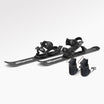






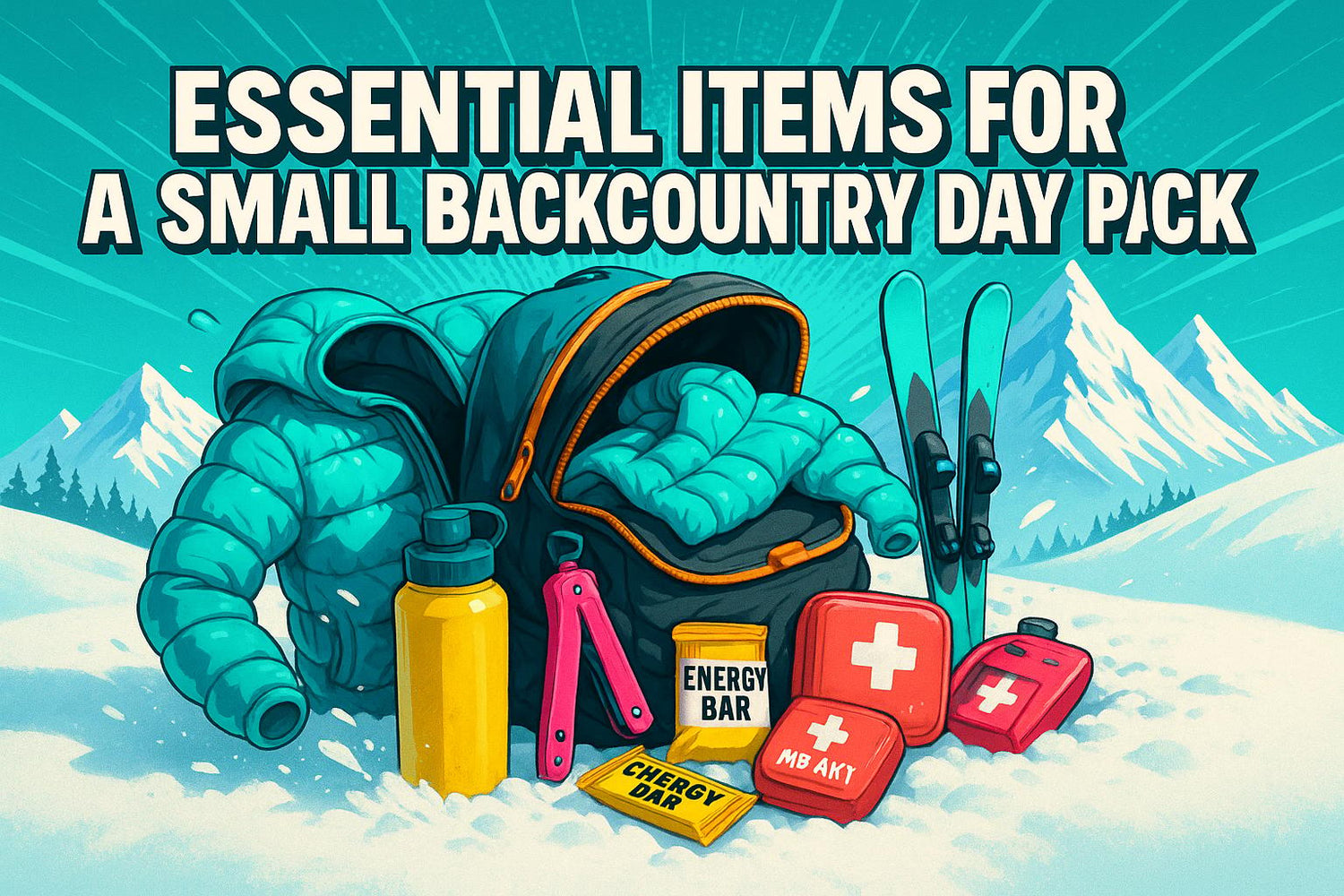
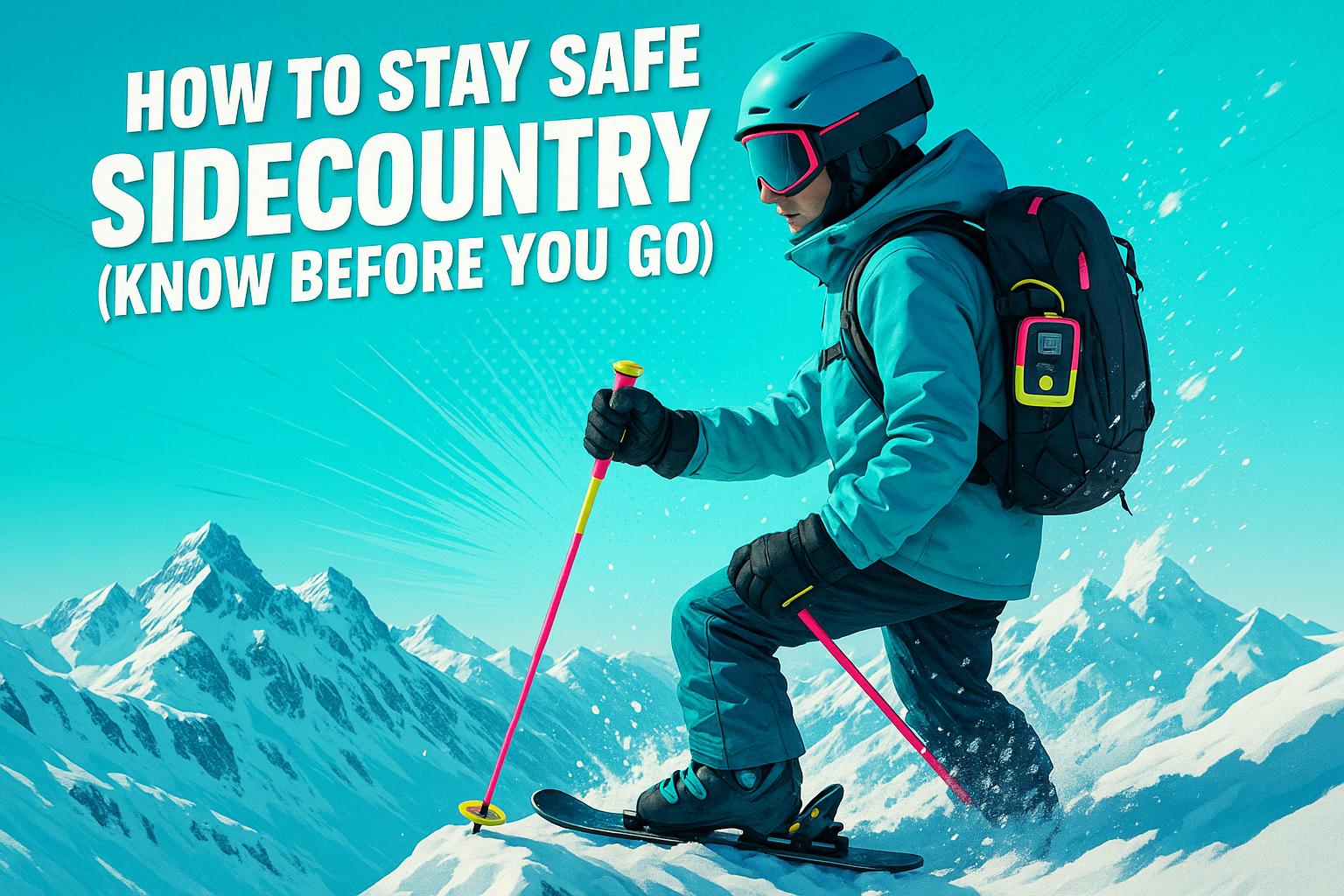
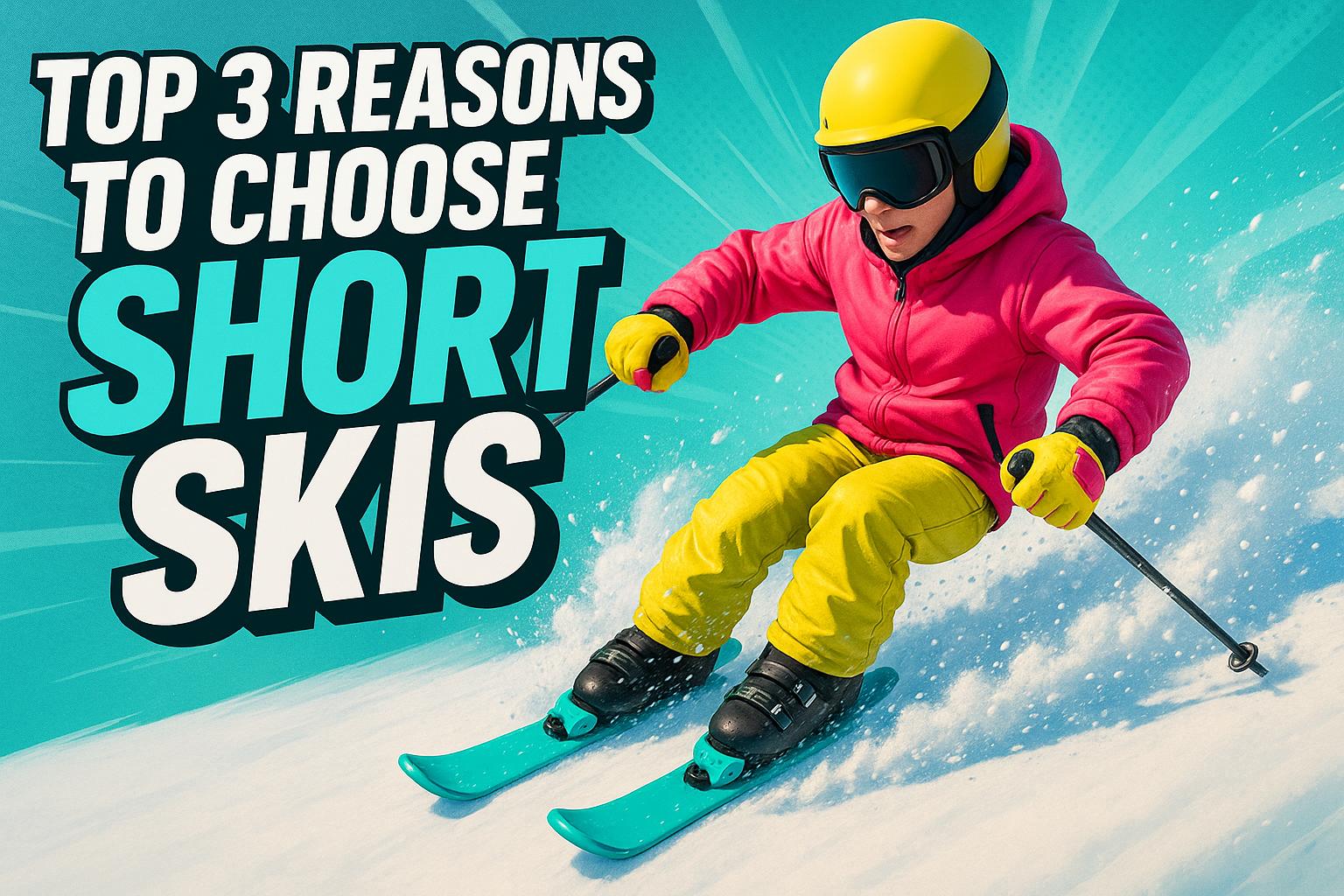







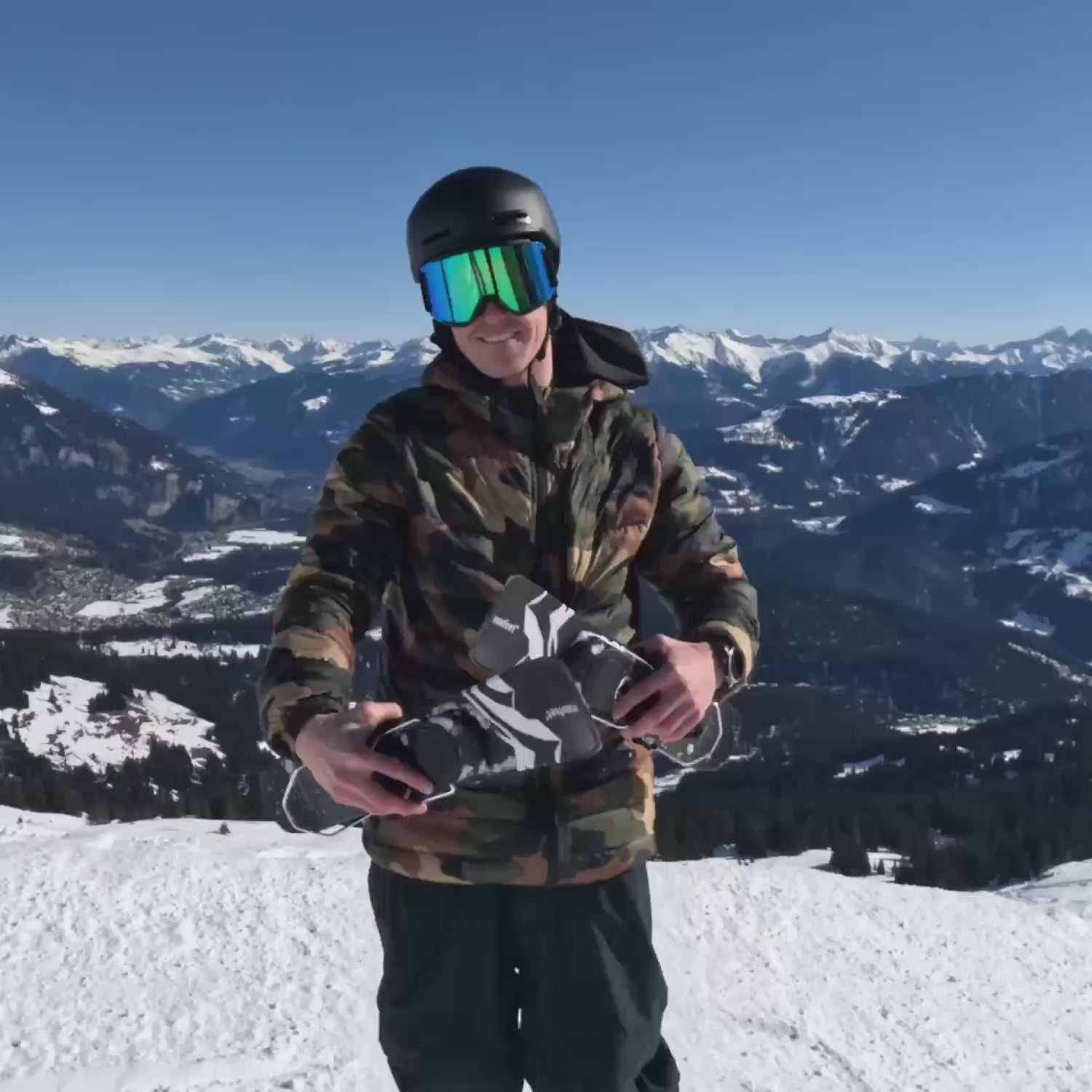

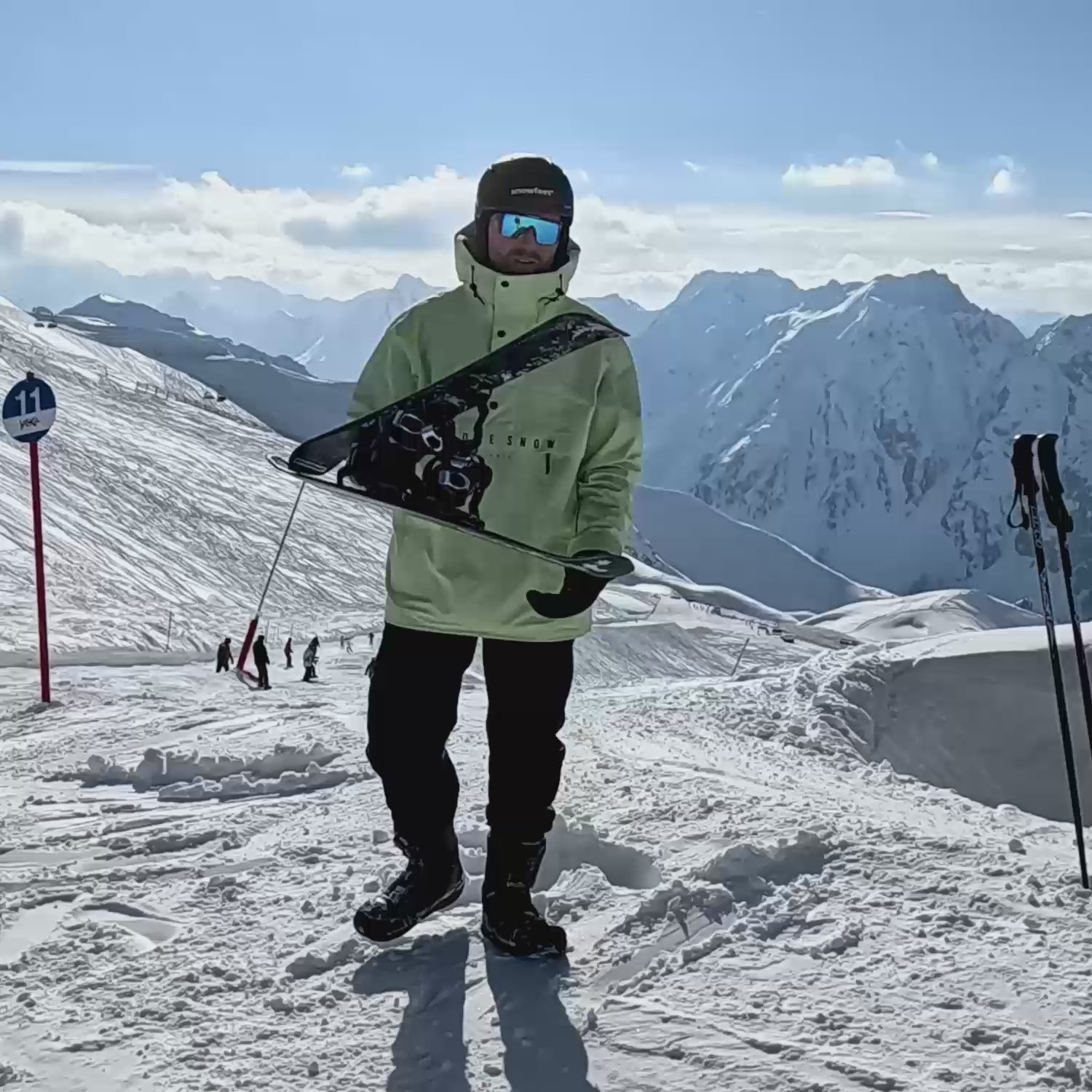
Deja un comentario
Este sitio está protegido por hCaptcha y se aplican la Política de privacidad de hCaptcha y los Términos del servicio.